Kaze no Densetsu Xanadu II (風の伝説ザナドゥII), released 6/30/1995, developed by Falcom
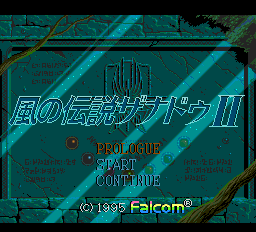
I only have four PC Engine RPGs left on my list, although because the last one was released so late, I won’t finish up the PCE until I’m almost done with the Super Famicom RPGs as well. All four of the remaining games get fairly good reviews so I may finish them all, although we’ll see.
This is a followup to Legend of Xanadu, which I covered earlier. I would recommend reading that post since this game is very similar to the previous one. However, it is shorter, simpler, and overall much easier.
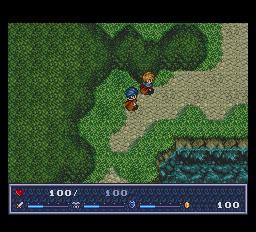
The graphics are much improved compared to the original; they finally make full use of the PC Engine’s capabilities. The system is the same — you still run into enemies (although now you swing the sword automatically rather than just running into them). The weapons and armor work the same way, where you gain stats for the weapons by attacking and the armor/shield by getting hit. So the first thing to do in any new area is just get beat up by the enemies until your armor/shield have reached a high enough % that you don’t take any more damage, and then continue. There’s basically no challenge.
HP is different; you no longer gain max HP from staying at inns, but only for using Mushrooms or gaining hearts.
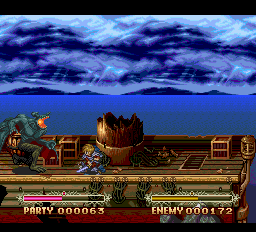
The side-scrolling action sequences return from Xanadu I, but with a significant change — only the boss fights are done this way, there are no scrolling stages the way there were in the first game. The bosses are also much easier than the first game because they changed the way the healing items work. In 1, you had two healing items — 1000 hp heal, or full heal. At the beginning of the game the 1000 hp heals are so powerful you can just mash your way through the boss battles, but by the end the full heals are too rare/expensive and the 1000 hp heal barely anything, so it becomes harder. In 2, the basic healing item scales with stages, so that it remains viable up to the final chapter. This means that all of the boss battles can be beaten just by holding down the turbo button for attack. Apparently they added some moves you can do with button combos like a fighting game, and there’s a down stab that I did use in one or two fights, but mostly you can just hold down the turbo button and win.
You can also apparently play 2-player in the boss fights.
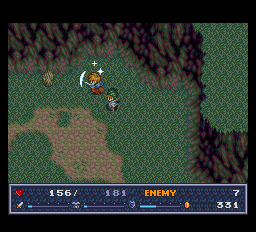
The first game involved a huge amount of backtracking, and flags involving talking to various people in the right order — this was annoying but did flesh out the world. The sequel got rid of all of that so that it’s much more streamlined, but you do lose the detail. There are also only 8 chapters instead of 12, and the dungeons are shorter — even the final dungeon, which is longer than the rest, is nothing compared to the massive final dungeon of 1.
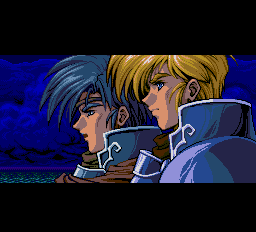
Like 1, each chapter ends with a cutscene voiced sequence, which is the only voicing in the game other than the (rather long) prologue. The story continues from the first game and is fairly typical Falcom.
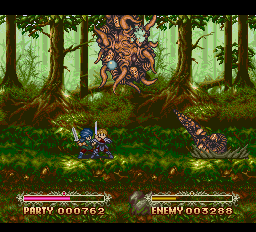
The game takes place 3 years after the first game; in game the magic from Ishtaria (goddess) had disappeared, and the main character Arios overcame the challenge, brought peace to the world, and now is king. But now with the loss of the magic, other continents are available for travel (I don’t remember why they were blocked before, maybe protection of the goddess or something like that). So Arios sends Ryukos from the first game to investigate a new land nearby. But they lose track of him, and so Arios himself goes with Daimos (also from the first game) to investigate.
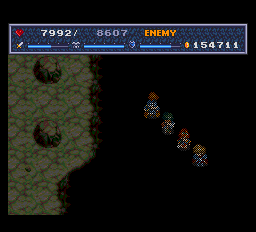
From here it’s a pretty typical plot — collect 7 gems to prevent the rebirth of a dark god, but we can’t prevent it so then defeat the dark god. It’s competent enough but nothing we haven’t seen before. As I said, there is far less detail and depth than in the first game, particularly with the side characters.
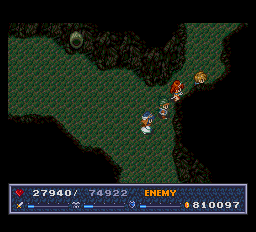
I often have problems in ARPGs finding my way around, and i was even more acute in this game; the corridors all look the same and there are a lot of hidden passageways.
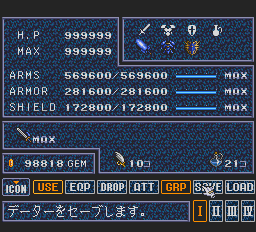
In the end I think I liked the first game better, despite its flaws. The second game has much better graphics, and the streamlined system is certainly easier to play. But at the same time it lacks the overall quality of the first game. (One Japanese site I read said that even though the first game was a console original it felt like a port of a PC game whereas this feels like a console original — I would agree with that.)
When you finish the game you get some bonus modes where you can replay with all your equipment, do a Time Attack on the bosses, watch the visual scenes, replay any of the chapters, and maybe some other things.
So this game isn’t bad — it’s a game to play quickly, enjoy a bit, and forget.
—
Next week I will be posting the list of games for July through September 1995. I need an extra week of padding for Sangokushi Koumeiden because it’s a rather long game but the gameplay is nearly identical to Eiketsuden and I’m still not going to summarize the entire Three Kingdoms story so I won’t have a whole lot to say about it. I’m also going to be on vacation a few times this summer so it’s possible that I will not be able to keep up the weekly posting all summer, but I’ll do my best.